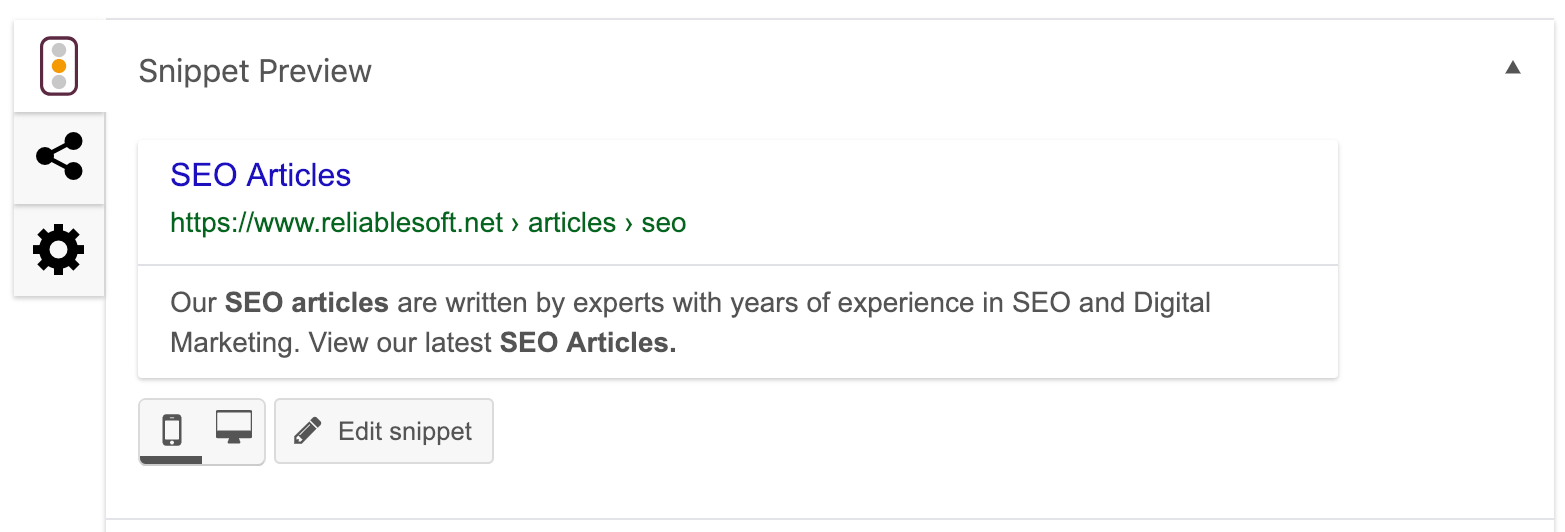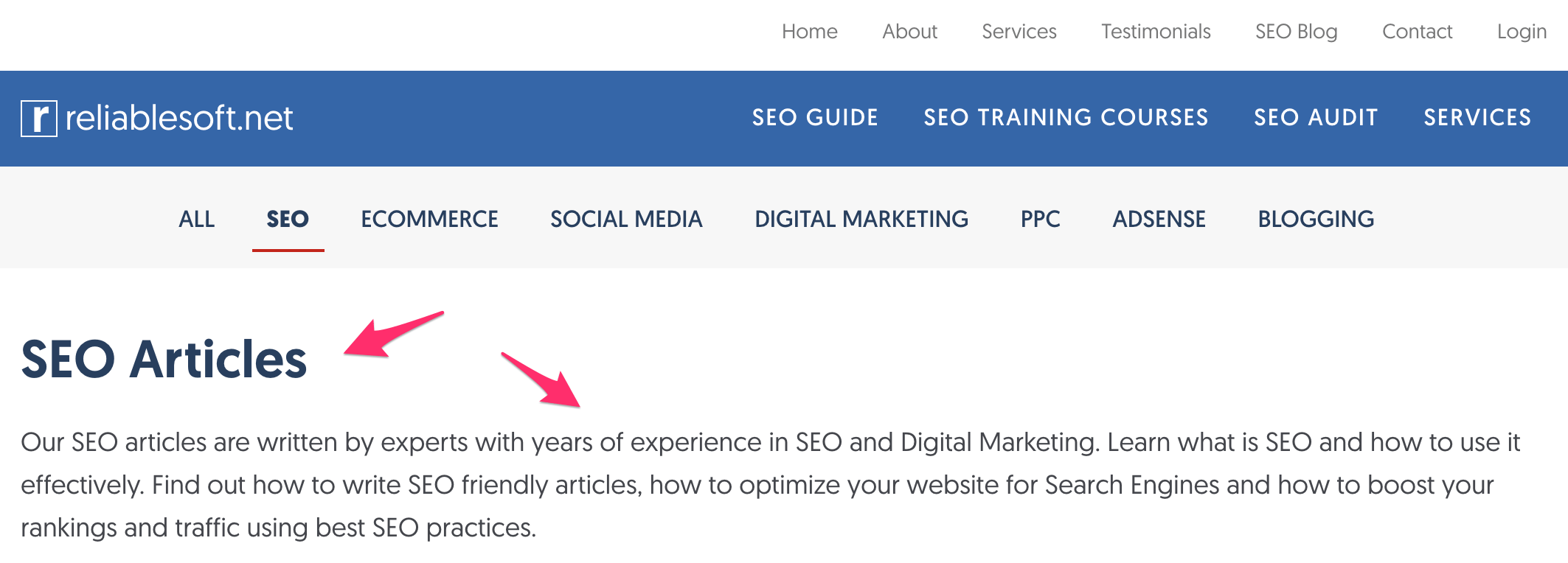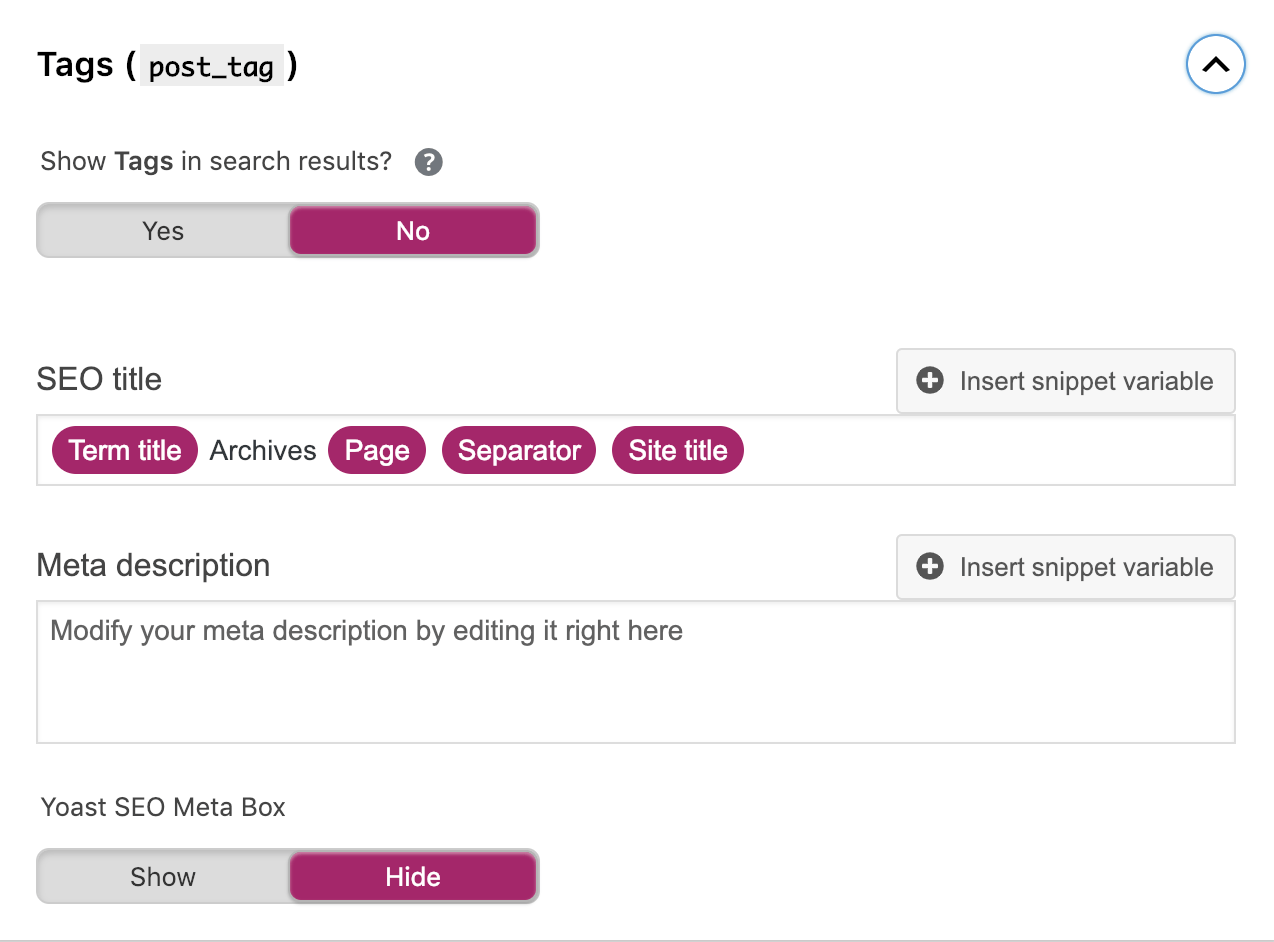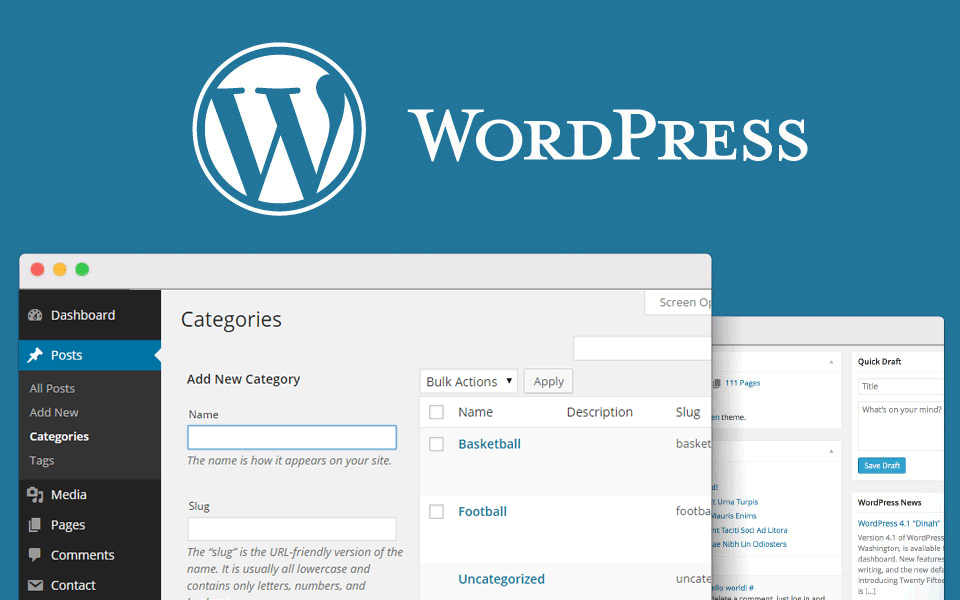One of the most confusing areas when it comes to WordPress SEO is how to optimize your category and tag pages. Many people are not aware of the role of these pages and how they can negatively impact their SEO efforts.
In this post, you will learn what is the difference between a category and a tag page and what you should consider when optimizing your WordPress website for maximum SEO.
What is a category page?
A category page allows you to group different posts together. It’s like your main blog page but it only displays posts from a particular category.
When you create a post you have the option to add it in one or more categories. Pages by default don’t have this option.
A properly optimized WordPress theme will show the category of a post in the breadcrumb, like the example below.

Category pages may share the same template as your posts and the same sidebar or widgets. This depends on the theme you are using but in the majority of cases a post page and a category page have similar layout.
Usually a category page (also known as Archive page), will show the title, image and introduction of a post and will have paging at the bottom to help users navigate through the archives.
When thinking about your blog structure and navigation, it is a common practice to group your posts into categories and show these on your main menu. A typical website has the following structure:

Category Page SEO
From an SEO perspective category pages have several issues, duplicate content is one of them. A category page that shows the excerpts of a number of posts doesn’t have any unique content since all the content is already available in the individual post pages.
This is also true for ecommerce websites where a category page will show a list of products that make up the category without having unique content on its own.
Category pages are difficult to rank high in the search results
Because of the above problem, Google is more likely to rank a page (or post) from your website instead of a category page.
Search for any keyword on Google and you will see that category pages are rarely shown in the SERPS.
The only cases that Google may show a category page is when a website has a lot of related pages and the SEO structure of a website is such that it helps Google choose the category page over a post page.
When are category pages useful for SEO?
In blogs or corporate websites, category pages are mostly used to help users navigate a website and find what they are looking for faster and easier. SEO wise, they don’t serve any purpose.
In cases though that you have an ecommerce website, services website or even a travel website, category pages can serve as landing pages and are also important for SEO.
Let me explain this with an example:
Assume that you have a travel website showcasing villas for rent in different parts of Italy.
You have category pages for your main locations i.e. ‘Villas in Sicily’, ‘Villas in Sardinia’ etc. and individual pages for each villa i.e. ‘Villa Talia – Large Villa for Rent in Sicily’, etc.
When users search Google for ‘Villas in Sicily’, you want them to land to your category page so that they view all available villas in that particular location and not a single property.
If you have experience with such scenarios, you know that Google might choose not to show the category page because they find the individual pages to have more valuable and unique content.
How do you solve this problem?
There are a number of things you can do to help Google rank the category page in their results.
Your category pages must have unique titles and descriptions.
When you EDIT a CATEGORY on WordPress you can configure the titles and descriptions.

When choosing your title and description, same rules apply as in the case of posts or pages.
Pro Tip: Read How to create SEO Friendly Titles and Meta Description optimization for all the tips related to optimizing your titles and descriptions.
Your category pages need to have unique content
Next, to solve the problem of not having unique content on the category pages, you need to add a few paragraphs of text to the ‘Description’ field.
This is normally shown at the top of the page. I say normally, since the actual position depends how your theme is configured to show the category descriptions.
If everything is configured correctly, your category pages will have a unique title, a unique H1 heading and a useful description.

Set Canonical URLs for multipage categories
Before proceeding to the next step, if you have paging enabled for your category pages (or if it shows options like ‘next post’ or ‘previous post’ at the bottom of the page), make sure that all subsequent pages have canonical URLS pointing to the first page.
Pro Tip: Read this guide from Google about pagination and SEO.
As far as on-page SEO is concerned, these are all the settings you need to make to your category pages.
Advanced SEO for Category pages
The problem explained above with Google picking a single page instead of a category page still remains, even after you optimized your category titles and descriptions.
So, you need to go one step further and perform the following checks / changes:
Make sure that you have breadcrumbs enabled on your website and that the links in the breadcrumb menu are clickable and have the proper schema.
In our example above the breadcrumb when viewing a villa page should look like this:
Home > Villas in Sicily > Villa Talia
‘Villas in Sicily’ should be a link pointing to the category page.
Next, you need to add internal links in the individual pages that will point to the category page using the proper anchor text.
For example, you can edit the description in Villa Talia and add a link to help users navigate back to ‘Villas in Sicily’.
These internal links will help Google understand that your category pages are important and also it will help users navigate your website better.
Lastly, check that you don’t confuse Google by having the title of the category pages included in the titles of the individual pages.
For example, don’t have this as a title for a villa: ‘Villas in Sicily – Villa Talia for Rent’.
In the titles of the individual pages you should give details about their unique characteristics, and page content and not about their category.
The above concepts can be applied to any ecommerce website or even to blogs. It is an advanced SEO technique for optimizing your category and archive pages better.
What are tag pages?
When you add a tag in the tags section of a post, WordPress creates a page for each tag. The URL of a tag page is https://www.yourdomain.com/tag/tag-name.
- A tag page is similar to a category page since it allows you to group posts together.
- Tag pages usually share the same template as archive pages (categories).
- Tag pages are not shown in the menu unless you specifically add them
- Tag pages have the same problems (lack of unique content) as category pages.
When you go to the TAGS page on WordPress and EDIT a page, you can do the same SEO fixes as explained in categories to make your tag pages unique and interesting.
In the majority of cases, tag pages are only used to aid the user navigation and serve no other purpose.
Tag pages may have the same titles as category pages or even posts and this is not good for your SEO.
I have seen a lot of cases on client’s websites where tag pages are shown in the SERPS (instead of the main pages) and this is not a good user experience or for the presentation of a company in the search results.
Best SEO practices for tag pages
The best practice is to ‘noindex’ and ‘nofollow’ tag pages. By doing so Google (and other search engines), will not take into account these pages while indexing your website. This will save you a lot of time and also make your website more optimized.
Besides adding the no-index and no-follow directives in tag pages, you should also exclude them from your XML sitemap.
If you don’t want to stop Google from indexing your tag pages because they are important for your website, then you should use them in your pages carefully and avoid having too many tags as links on each and every page.
How to noindex and nofollow tag pages
This depends on what theme/plugins you are using.
If you are using Yoast SEO plugin, you should go to SEARCH APPEARANCE and then TAXONOMIES.
Locate the tags section and make sure that show tags in search results is set to NO.

Conclusion
Category and tag pages are available by default on all kinds of WordPress websites. Many people ignore them but as explained above, this can negatively affect your SEO efforts.
Before making any changes to your category pages, think of your website structure and navigation.
If the sole purpose of the category pages is to aid navigation but they are not pages you expect (or want) to see in the SERPS, then consider removing them from your sitemap and also ‘noindex’ them.
If category pages are important for your SEO, like the example of a travel website, then optimize them and make sure that you send the right signals to Google from the rest of the pages as well.
As far as tag pages are concerned, keep them in the index only when you really need them. It’s very unlikely that Google will rank a tag page high in their results so the best practice is to de-index them.





SEO is a must have task to do for any blogger/webmaster who wanted to get high quality traffic that will convert. Thanks for this post.
Very informative article, I was searching for the exact article but I failed to browse the correct article over google search. After two days struggling with different search terms I found your website and the article is amazing. Hope everyone like me will get information about these terms Categories and Tags SEO.
Once more time thanks buddy for such a great article. I’m developing a script for video sharing website and I have categories and every video has tags like in youtube we input tags while uploading videos.But I was worrying about how to handle Tags and i got your article.
Regards
Tahir Afridi
Thanks, Alex
I face the same problem you are discussing in this post actually I am include tag and category in sitemap and next day I am seen google show tag pages and my post’s main page in google search result so that is canonical issue after reading your post I am changed all my Yoast SEO setting I also check no index tag and category in Yoast SEO sitemap thanks once again to provide an informative post.
Hi Narinder
I’m very glad that my article helped you solve issues with your tags and categories.
All the best with your SEO efforts
Alex
Great Post! It is very informative and useful.
Thank you Sonika,
Hi. How do you differentiate subsequent pages’ titles in Yoast?
For example in the blog of my website I see the same title in each page of it:
site/blog page
site/blog/page/2
site/blog/page/3
Each page gets flagged for duplicate page titles. How do you go about this?
Thanks.
Hi Ali
You don’t have to worry about the titles of subsequent pages. It’s normal to have the same title as you main blog page. Google can understand that the duplication is because of paging.
Hope this helps
Alex
Just wanna comment on few general things, The website layout
is perfect, the content material is real good :
D.
I’m so sorry but I strongly disagree regarding no indexing tag pages. I have a medium recipes based website, and indexing these tags has allowed me to rank for long tail keywords by having a good tag strategy. I use tags as a way to make compilations that are always up to date.
So I wouldn’t recommend that, I would encourage people to optimize them and take advantage of them instead of just making Google ignore them.
Hi Oni
If tags are useful for you, then I agree with you that the best approach is to optimize them and take advantage of them. In most common scenarios though, tag pages do not offer any value and in this case it’s better to noindex them.
Thanks for your comment
Alex
Hey, this is structure of my website.
Category 1:
Post 1, Post 2, Post 5
Category 2:
Post 3, Post 5, Pist 6
Now tell me.. Should I use categories as no index or index.
Hi
You should keep your categories indexed but optimize them as described in the post.
Hope this helps
Alex
Nice article Alex, but Yoast blog mention the different practice and said that category and tag are landing pages and important for seo and should be indexed and even category and tag pages of blog itself, indexed in google. how you explain this contradict issue? Im complete mixed UP!
Amazing Article Alex. I enjoyed learning new terms of SEO such as Category tag and Index tag. Understandable content. Thanks for sharing. Keep posting.